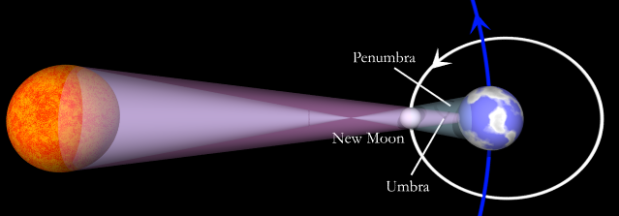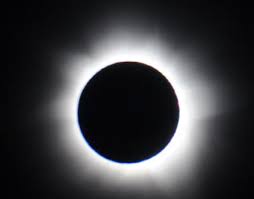We can see total solar eclipses thanks to a couple of phenomena: orbital motions of Earth and the Moon, and a cosmic coincidence that renders the Sun and Moon to appear similar in size.

Solar eclipses can only happen during the new phase of the Moon, when the Moon lines up between Earth and the Sun. If the three bodies are not quite aligned correctly, then the Moon may block part of the Sun in what is called a partial solar eclipse; if the three are perfectly aligned, then the Moon can completely cover the Sun, creating a total solar eclipse.
However, because the distance between the Moon and Earth varies, the Moon will sometimes appear a little larger or smaller than usual. Occasionally, even when the three bodies are perfectly aligned, the smaller-than- usual Moon won’t completely block the Sun, leaving a ring, or annulus, of the Sun showing. This is known as an annular eclipse.

But there is more to the story and in order to understand it, a look at one of space’s curiosities is necessary. The Sun has a diameter about 400 times greater than that of the Moon, but it also happens to be 400 times further from Earth than the Moon. This means that the two bodies, as seen from Earth, appear to be about the same size. If the Moon was farther away from Earth, then the Sun would appear larger and thus could never be covered by the Moon. In that case, total solar eclipses wouldn’t be visible from Earth; the best we could hope for would be annular ones. This will eventually become the case; with the Moon moving away from Earth at a rate of 1.5 inches per year (about the same rate that our fingernails grow), in several hundred million years it will be too small to completely block the Sun.
By Kevin Schindler, Lowell Observatory Public Information Officer and Historian
